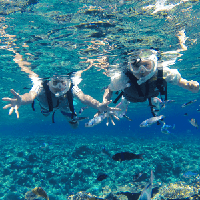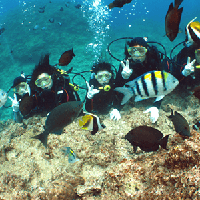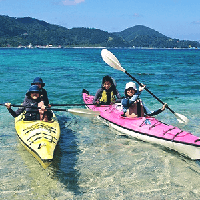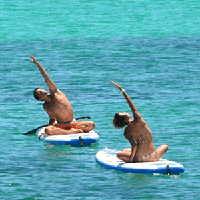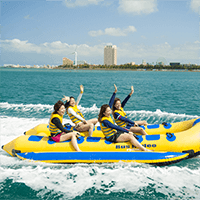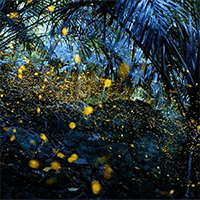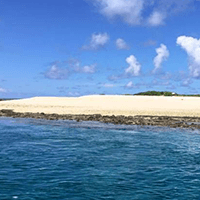- Age 5~Age 100
- 1~2 hours
- 11:00
Approximately 70% of domestic incense sticks are produced on Awaji Island. Among them, the Ei district is where many manufacturers gather, and you can smell the delicious aroma of incense as you walk through the town. It has even been selected as one of the "100 Scented Landscapes" by the Ministry of the Environment. Visit an incense manufacturer that has been producing incense since 1905 and continues to produce it by hand, learning about the history of Awaji Island incense sticks, knowledge of fragrance, and the manufacturing process from a fragrance master called a "Koshi", and experiencing making your own original incense. After learning the basics of incense by visiting a manufacturer of incense sticks on Awaji Island, which accounts for approximately 70% of domestic incense sticks, and learning about the history and knowledge of fragrance of Awaji Island incense sticks, as well as the traditional manufacturing process, it's time to make your own incense! Choose the color of the incense, put the ingredients and water in a mortar and knead. Blend your favorite fragrances and knead again, then use a die to shape the incense. Take it home and let it dry thoroughly for about a week, and your incense is ready! You can experience making your own scent at home. [Experience Schedule] 11:00 Meeting Observe the traditional incense manufacturing process at Awaji Umekundo Ei Factory (30 minutes) 11:30 Learn about the history of incense and fragrance knowledge from a Kohshi (producer) and experience making incense (80 minutes) 12:50 Scheduled to end
- Age 5~Age 100
- 1~2 hours
- 11:00
Approximately 70% of domestic incense sticks are produced on Awaji Island. Among them, the Ei district is where many manufacturers gather, and you can smell the delicious aroma of incense as you walk through the town. It has even been selected as one of the "100 Scented Landscapes" by the Ministry of the Environment. Visit an incense manufacturer that has been producing incense since 1905 and continues to produce it the traditional way, learning about the history of Awaji Island incense sticks, knowledge of fragrance, and the manufacturing process from a fragrance master called a "Koshi", and experiencing making your own original sachet. After learning the basics of incense by visiting an incense manufacturer on Awaji Island, which accounts for approximately 70% of the domestic incense market, and learning about the history of Awaji Island incense stick production, knowledge of fragrance, and the traditional manufacturing process, you can finally experience making an incense sachet. You can mix your favorite fragrance ingredients and make an original sachet to put in your favorite sachet, and enjoy the scent at home. [Experience Schedule] 11:00 Meeting point Observe the traditional incense manufacturing process at Awaji Baikondo Ei Factory 11:30 Learn about the history and scents of incense from a Kohshi (producer) and experience making a scented sachet (50 minutes) 12:20 Scheduled end
- Age 13~Age 100
- 3~4 hours
- 10:00
With a history of 1400 years, tiles have protected Japanese houses, including shrines and temples. Among them, there are "Onishi" who have the skills of a master craftsman who draws a blueprint in his head while looking at the drawing with his own eyes without using blueprints or molds, and finishes it only with the sense of his fingertips and a handmade spatula. You can make a one-of-a-kind oni tile by learning from an "Onishi" how to make oni tile by hand using "name-do" soil that is more than 2 million years old. Awaji Island is one of the three major production areas of tiles in Japan, and is the number one producer of smoked tiles that shine with "silver". Tiles have a history of more than 1400 years, and tile making has been going on in Awaji Island for more than 400 years. Moreover, the soil used for Awaji tiles is still more than 2 million years old, and the very fine particles of "name-do" are used to create smoked tiles that shine with a beautiful silver color by baking (smoking) them in a kiln. In Japan, onigawara tiles have been used to decorate roofs as a talisman since ancient times. Even today, these onigawara tiles are carefully handcrafted by oni-shi (demon craftsmen) without the use of machines. Normally, you don't get to see onigawara tiles being made, but in this experience, you can watch the onigawara craftsmen's skills up close and make onigawara tiles together. Since this experience is limited to one group, you can make onigawara tiles without worrying about other people. If you have any questions or questions about how to make them, you can ask the onigawara maker at any time, and it is an experience where you can experience traditional techniques in a private atmosphere. [Procedure] 1. Draw a rough sketch of the image (you can also bring a draft with you) 2. Decide on the design of the onigawara tile 3. Together with the onigawara maker, use tile clay (nametsu) to create a rough shape 4. Let it cure (eat lunch (each person) during this time) 5. Finish the fine details using a spatula and your fingertips 6. Completed (you can also take a commemorative photo with the onigawara maker) *The work will then be carefully dried and fired and delivered in about two months. *For lunch, you can enjoy Awaji Island's specialty "Kawara-yaki" at the facility (additional charge required).
- Age 7~Age 80
- Over 6 hours on the day
- 09:00
This is a day tour that walks around Tadanoumi, Takehara City. Tadanoumi is closely related to the name of Taira no Tadamori (the father of Taira no Kiyomori). After climbing Mt. Kurotaki with a guide and seeing the beauty of the many islands in the Seto Inland Sea like a diorama, you can enjoy seafood rice bowls topped with plenty of fresh fish. After Zen meditation and sutra copying at Shoun-ji Temple, you will tour the history of Kagi Castle and Tokoura Shrine, which are closely related to the Kobayakawa navy. ~ Flow of the day ~ 9:00 Meet at Takehara City Tadanoumi Port 2nd parking lot (in front of Aohata Jam Deck) 9:10 Kurotakiyama hiking 11:30 Ajidokoro Sunrise Lunch 13:30 Winning Zen meditation and sutra copying experience 15:00 Town walk 16:00 Takehara City Tadanoumi Port 2nd Parking Lot
- Age 13~Age 100
- Within 1 hour
- 13:30
An online experience of making Okinawa's classic sweets "Chinsuko" with an aunt on the island. In addition to the basic ingredients, we will also deliver brown sugar and salt from Ie Island to your home. After baking, let's have a chat with the island's grandmother while eating freshly made chinsuko ~ ★ ~ Flow of the day ~ ➀ Greetings and self-introduction (5 minutes) ② Chinsuko making experience (30 minutes) * LIVE delivery of IE Beach in 10 to 15 minutes waiting time for baking (depending on the weather) ③ Introduction of Ie Island (10 minutes) ④ Q & A (10 minutes) -What to prepare in advance- ・ Medium to large balls・ Microwave oven or toaster with oven function ・ Work space * If you are concerned about scattering, please prepare newspapers. (To cover the keyboard of a desk or computer) * Since it is made by hand, please bring cooking gloves if you are concerned.
- Age 7~Age 80
- 2~3 hours
In the winter of 1180 (Jisho 4) at the end of the Heian period, at Takanawa Castle, located in the middle of the Seto Inland Sea, which was the sphere of influence of the Taira clan, Kono Michikiyo responded to Yoritomo and raised an army against the Taira clan. Due to his meritorious communication in the Genpei War, he established a sphere of influence in almost all of eastern Nakayo, Iyo Province, centered on Kono District, Kazahaya County. However, in the Jokyu Incident of 1221 (Jokyu 3), many of the Kono clan sided with the retired Emperor Gotoba and marched to Yamashiro Province, but were defeated, most of their territories were confiscated, and they were in a desperate situation. It was Michiari who got the family back on its feet. He challenged the Mongol invasion, fought bravely by charging into enemy ships in Hakata Bay, and recovered his former territory. He is said to be the "founder of the Kono clan's revival." The triumphant return of the Kono clan, Kono Michiari, who challenged the Mongol invasion, is now revived after 400 years! 16:10 Registration begins at the Kashima Ferry Waiting Room at Hojo Port16:30 Registration closes *Parking is at the individual's discretion16:50 Orientation begins17:03 Depart Hojo Port, arrive Kashima Port (change boats)17:10 Depart Kashima Port, view the Kono Navy Fleet, travel counterclockwise to view Tamari Island and Samudo Island, and circle Kashima (approximately 30-40 minutes)17:50 Return to Kashima Port, view the religious ceremony at Kashima Shrine / head to the dining venue just in time for the sunset / enjoy dinner outdoors (victory celebration)18:07 Sunset19:30 Depart Kashima Port, arrive Hojo Port, disband
- Age 7~Age 75
- 1~2 hours
- 11:00
[Walk with the guide and discover! Charm of Awaji ~Izanagi Jingu Course~】Izanagi Jingu, which enshrines two gods, Izanagi no Mikoto and Izanami no Mikoto, is said to be the oldest shrine in Japan, and appears in the Kojiki and Nihonshoki. Experience a special formal worship at the worship hall of Izanagi Jingu. Main course Meet at "Izanagi Jingu-mae" bus stop of "Awajin Awahime Bus" ⇒ Special formal worship at Izanagi Jingu ⇒ Stroll around Izanagi Jingu ⇒ End
- Age 7~Age 75
- 1~2 hours
- 13:15
[Walk with the guide and discover! Charm of Awaji ~Iwaya Course~] ``Eshima'', one of the traditional places of ``Onokoro Island'', which is said to be the first land in Japan, and ``Iwakushi Shrine'', which is said to be the home of Mr. Ebisu of Nishinomiya. and "Ebisu-sama", and the retro townscape of "Iwaya Shopping Street", which prospered as the gateway to Awaji Island, with a guide staff. Main course Meet at "Iwaya Port Terminal" bus stop of "Awagami Awahime Bus" ⇒ Eshima ⇒ Iwakusu Shrine and Ebisu ⇒ Stroll around Iwaya Shopping Street ⇒ End at "Awajishima Tacoste"
- Age 0~Age 80
- Within 1 hour
- 12:00
Let's experience pineapple harvesting in Ishigaki Island, Okinawa Prefecture! ■Do you know how a pineapple bears fruit? ■It's true that you can eat a ripe pineapple to the core! ? Let's experience harvesting and tasting the world's best pineapple with a farmer who has been growing it for many years on Ishigaki Island♬
- Age 3~Age 70
- 1~2 hours
- 09:00 / 14:00
Experience farming and make your own traditional Okinawa seasoning, "Koregusu"! Harvest island chilies in the fields of local farmers! Use the island chilies you harvested and "Donan" awamori from Yonaguni Island to make "Koregusu", a traditional Okinawa seasoning. Q. What is Koregusu? A. It is a spicy seasoning made by soaking island chilies in awamori, which is indispensable to Okinawa cuisine! It can be used in a wide range of dishes, not just soups, but also stir-fries, tacos, pizza, and more!
コーレーグースが沖縄に旅行に来た際には毎回買って帰るほど好きすぎて、今回こんな魅力的な体験ができるということで体験させていただきました! 自分で収穫した唐辛子からコーレーグースを作れるなんてとっても楽しかったです! すぐに持って帰ることもできていいですね。 子供と来ても楽しめそうだなと思いました!
- Age 6~Age 100
- 2~3 hours
- 09:00 / 10:00 / 11:00 / 13:00 / 14:00 / 15:00
"Circular agriculture", a traditional agricultural system that has been practiced in Minami Awaji City for over 100 years and is certified as a Japanese agricultural heritage, is an advanced production circulation system unique to Awaji Island that combines rice, onions, and cattle breeding. This is an SDGs experience tour where you can visit spots that are full of the characteristics of this region, such as onion huts, long-house gates, and reservoirs, and experience the secret of the deliciousness of onions through an actual onion harvesting experience. "Circular agriculture", a traditional agricultural system that has been practiced in Minami Awaji City for over 100 years, is a production circulation system unique to Awaji Island that combines rice, onions, and cattle breeding, and was certified as a Japanese agricultural heritage in 2020. In order to make effective use of limited farmland, rice and onions are grown alternately in the same place as "double cropping", but if this is repeated, the soil will eventually lose nutrients. That's where cow manure becomes a miracle cure. The rice straw produced by rice cultivation becomes cow feed and creates nutritious cow manure. This mutual support with the livestock industry keeps the farmland fertile and produces delicious, sweet onions. On this tour, you can actually harvest the delicious onions grown under this system while interacting with local residents. Afterwards, you will have the chance to try tasting sliced onions with onion dressing to really experience the sweetness of the onions you harvested! In addition, an official guide from Minami Awaji City will take you to spots packed with the characteristics of the region, such as the "nagayamon" house structure used by livestock farmers that supports this "recycling agriculture," the "onion hut" that was designed as a drying facility suited to the climate of Awaji Island, and the "irrigation ponds" that are the most densely populated in Japan as a solution to the water shortage that has long been a problem on the island. Make the most of what you can use, and continue to produce good things without waste. Experience the prototype of the SDGs that has been around for over 100 years. Experience Schedule Schedule Example (for a 10:00 start) 10:00 Meet at the parking lot (next to Oji Shrine, Kasumigo, Minami Awaji City) 10:00-10:40 Explanation of the Japanese Agricultural Heritage "Recycling Agriculture", tour of the surrounding area (visit the onion shed and cowshed while enjoying the scenery surrounded by nature) 10:40-11:20 Explanation of Awaji Island onions, onion harvesting experience 11:20-12:00 Tasting of freshly harvested onions (sliced or steamed whole), freshly squeezed milk ice cream
- Age 6~Age 100
- 2~3 hours
- 09:00 / 10:00 / 11:00 / 13:00 / 14:00 / 15:00
"Circular agriculture", a traditional agricultural system that has been practiced in Minami Awaji City for over 100 years and is certified as a Japanese agricultural heritage, is an advanced production circulation system unique to Awaji Island that combines rice, onions, and cattle breeding. This is an SDGs experience tour where you can visit spots that are full of the characteristics of this region, such as onion huts, long-house gates, and reservoirs, and experience the secret of the deliciousness of onions through an actual onion harvesting experience. "Circular agriculture", a traditional agricultural system that has been practiced in Minami Awaji City for over 100 years, is a production circulation system unique to Awaji Island that combines rice, onions, and cattle breeding, and was certified as a Japanese agricultural heritage in 2020. In order to make effective use of limited farmland, rice and onions are grown alternately in the same place as "double cropping", but if this is repeated, the soil will eventually lose nutrients. That's where cow manure becomes a miracle cure. The rice straw produced by rice cultivation becomes cow feed and creates nutritious cow manure. This mutual support with the livestock industry keeps the farmland fertile and produces delicious, sweet onions. On this tour, you can actually harvest the delicious onions grown under this system while interacting with local residents. Afterwards, you will have the chance to try tasting sliced onions with onion dressing to really experience the sweetness of the onions you harvested! In addition, an official guide from Minami Awaji City will take you to spots packed with the characteristics of the region, such as the "nagayamon" house structure used by livestock farmers that supports this "recycling agriculture," the "onion hut" that was designed as a drying facility suited to the climate of Awaji Island, and the "irrigation ponds" that are the most densely populated in Japan as a solution to the water shortage that has long been a problem on the island. Make the most of what you can use, and continue to produce good things without waste. Experience the prototype of the SDGs that has been around for over 100 years. Experience Schedule Schedule Example (for a 10:00 start) 10:00 Meet at the parking lot (next to Oji Shrine, Kasumigo, Minami Awaji City) 10:00-10:40 Explanation of the Japanese Agricultural Heritage "Recycling Agriculture", tour of the surrounding area (visit the onion shed and cowshed while enjoying the scenery surrounded by nature) 10:40-11:20 Explanation of Awaji Island onions, onion harvesting experience 11:20-12:00 Tasting of freshly harvested onions (sliced or steamed whole), freshly squeezed milk ice cream, and onion chiffon cake
- Age 6~Age 100
- Within 1 hour
- 10:00 / 14:00
Awajishima is known for its sweet and soft onions. We will learn the secrets of their deliciousness from Awajishima Hamada Farm, which grows onions in the Mihara Plain, the most prosperous area for onions production, and then we will head out to harvest! You can take home a bag of harvested onions as a souvenir. This is an experience where you can learn about why Awajishima onions are so delicious, and enjoy Awajishima onions even after you return home. Awajishima is a representative onion producing area in Japan. You can experience harvesting on an onion farm. The famous owner of Awajishima Hamada Farm, Tetchan, will teach you the secrets of Awajishima onions' deliciousness, and if you wish, you can even experience biting into an onion. After completing the preliminary preparations, you will finally enter the field and harvest the onions. You can take the harvested onions home as a souvenir. You can enjoy the soft and delicious Awajishima onions even after you return home. Experience Schedule Meet at the Awajishima Hamada Farm parking lot (20 spaces), then guide to the onion field. Explanation of the characteristics of Awajishima onions and harvesting methods (20 minutes). Head to the onion field! Harvest a net full of onions (20 minutes). End on site.
- Age 6~Age 100
- 1~2 hours
- 13:00 / 15:00
The west side of Awaji Island: Ayuhara district is the strawberry producing area of Awaji Island. The experience location, Hoshino Kajitsuen Bloom, is an experiential complex with a cafe run by a strawberry farmer in the Ayuhara district. You can learn how to make strawberry jam by talking with a craftsman. In addition to making jam, decorate a cake made in the cake studio with freshly picked strawberries as you like! After the experience, you can eat the decorated cake while having tea in the cafe space attached to the studio. You can take the jam you made home as a souvenir. Why not try making jam with freshly picked strawberries? Making jam in a cute studio is sure to be a special memory. The west side of Awaji Island: Ayuhara district is the strawberry producing area famous in Awaji Island. There, strawberry farmer Hoshi no Kajitsuen: Matsumoto-san was born in Tokyo and worked as an office worker in Osaka. He was fascinated by the nature and the slow flow of time on Awaji Island, and moved to Awaji Island. He has an unusual career history, thanks to his connection with local strawberry farmers. After that, together with Harima-san, who was his senior in Osaka, he opened Dessert & Confiture Studio Hoshi no Kajitsuen, which sells sweets made with strawberries picked at the farm. It has become a popular sweets shop in the local area. After that, they opened Hoshinokajitsuen Bloom, an experiential complex with a sweets cafe and experience workshop, where you can enjoy a relaxed space where you can enjoy the strawberries made by Matsumoto and the sweets made by Harima-san. When making confiture, the craftsman will carefully teach you from the beginning, such as the amount of sugar to use for the weight of the strawberries and the timing of adding the ingredients. Along with the confiture experience, you can also decorate a cake made by Arima with the freshly picked strawberries made by Matsumoto. Afterwards, you can have tea with the decorated cake. Cakes and drinks can be purchased separately on-site. Enjoy a fun time with friends, family, or as a couple. Below is the experience schedule (the schedule below is from 13:00, but if it is from 15:00, please read the time accordingly) 13:00 Meet (please come to the Hoshinokajitsuen Bloom store) 13:05 Move to the experience studio (2nd floor) to prepare, workshop on making strawberry jam from Hoshinokajitsuen ・Decorate a cake using strawberries from Hoshinokajitsuen 13:40 Move to the cafe space on the 1st floor and taste the decorated cake 14:00 End
最近チェックしたプラン
Please wait a moment
![[Awaji, Hyogo] Learn about the history and basics of fragrance from a fragrance master in this town of incense that has been around since the Edo period, and create your own original incense by choosing the scent and shape.の画像](https://img.activityjapan.com/10/58859/10000005885901_nXyAW2Zv_3.png?version=1745203267)
![[Hyogo/Awaji] Learn all about fragrances and then make your favorite scented sachet at an incense manufacturer that preserves traditional handmade manufacturing.の画像](https://img.activityjapan.com/10/58819/10000005881901_nXyAW2Zv_3.png?version=1744872913)
![[Hyogo, Minami Awaji] Try your hand at making onigawara tiles, a tradition that has continued for over 400 years! Learn from a master craftsman, the oni-shiの画像](https://img.activityjapan.com/10/58778/10000005877801_1Gz5AIDf_3.webp?version=1744699742)
![[Hiroshima/Takehara City] A trip to experience history and nature "Tadanoumi History Exploration Course" View of Setouchi from Mt. Kurotaki and delicious Setouchi seafoodの画像](https://img.activityjapan.com/10/45710/10000004571001_zupYFKe4_3.jpeg?version=1671709682)
![[Online experience] Experience making "Chinsuko" with ingredients from Iejima ★ The island's aunt teaches 3 kinds of flavors! * Deliver a set of materials in advanceの画像](https://img.activityjapan.com/10/35915/10000003591501_HRFi94fz_3.jpeg?version=1633597149)
![[Ehime, Matsuyama Hojo area] A journey to learn the story of the Iyo nobility, the Kono clan, who rest in Kazehaya, on a Kono Navy cruiseの画像](https://img.activityjapan.com/10/58341/10000005834101_DhQJ6N31_3.jpg?version=1742302626)
![[Hyogo Prefecture Awaji Island] Experience formal worship at Japan's oldest shrine "Izanagi Jingu" Spend a special time sharpening your sensesの画像](https://img.activityjapan.com/10/46911/10000004691101_AHkjA21Z_3.JPG?version=1678360622)
![[Hyogo Prefecture, Awaji Island] Walk the legendary "Eshima" and the Showa retro fishing port town "Iwaya"の画像](https://img.activityjapan.com/10/46866/10000004686601_atFOJjl6_3.jpg?version=1681448582)
![[Okinawa Ishigaki Island] Pineapple harvesting experience ♬ Let's harvest and taste the world's best pineapples from Ishigaki Island ☆ (From April to early August)の画像](https://img.activityjapan.com/10/46826/10000004682601_OBVaOJt4_3.jpg?version=1676369292)
![[Okinawa, Yonaguni Island] Experience farming in a local farmer's field! Make traditional seasoning Koregusu ★ Take it home ★ Easy participation without bringing anything ★の画像](https://img.activityjapan.com/10/54703/10000005470301_Z9byc6DU_3.jpg?version=1717655766)
![[Hyogo, Minami Awaji] Fresh onions and milk ice cream tasting included! Learn the secrets of onion production using the traditional "recycling agriculture" system with this agricultural heritage tour and onion harvesting experienceの画像](https://img.activityjapan.com/10/58637/10000005863701_1Gz5AIDf_3.png?version=1744251663)
![[Hyogo, Minami Awaji] Agricultural heritage tour to learn the secrets of onion production by "recycling agriculture" with fresh onions, onion chiffon cake, and milk ice cream tasting & onion harvesting experienceの画像](https://img.activityjapan.com/10/58613/10000005861301_1Gz5AIDf_3.png?version=1744251422)
![[Hyogo, Minami Awaji] The Hamada family will welcome you! Experience harvesting Awaji Island onions while touching the soil and listening to stories about the secrets of their deliciousness and agriculture in a relaxing atmosphere.の画像](https://img.activityjapan.com/10/58509/10000005850901_1Gz5AIDf_3.webp?version=1743489068)
![[Hyogo/Awaji] Experience making strawberry confiture and decorating cakes at a studio directly managed by the island strawberry farm "Hoshi no Kajitsuen"! Souvenirs and cakes available for coffeeの画像](https://img.activityjapan.com/10/58507/10000005850701_1Gz5AIDf_3.webp?version=1743477007)
